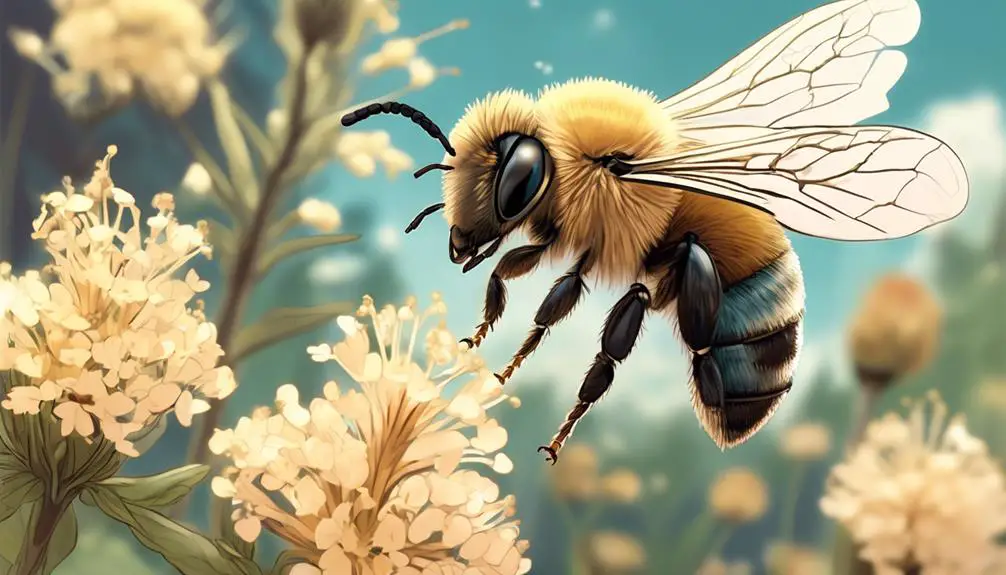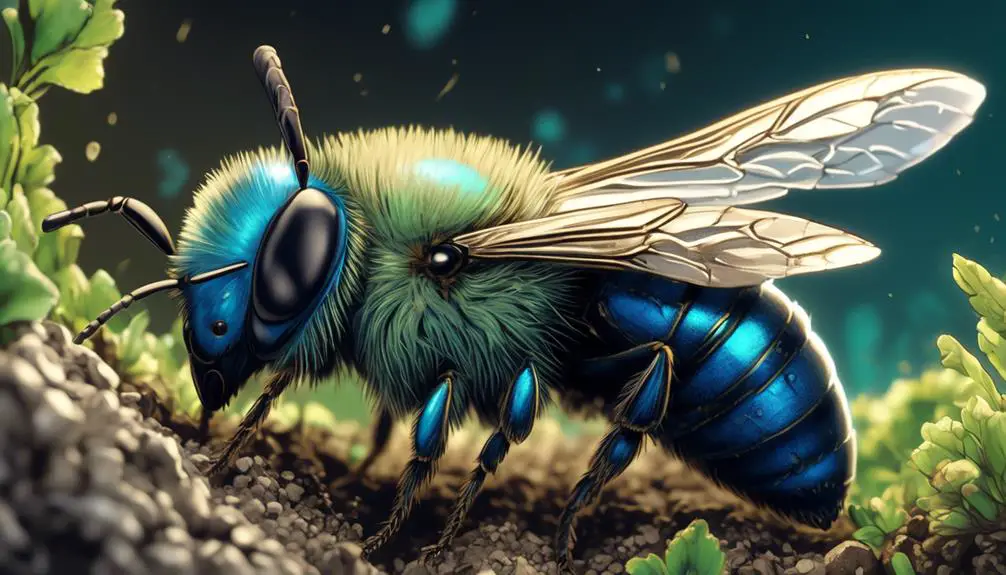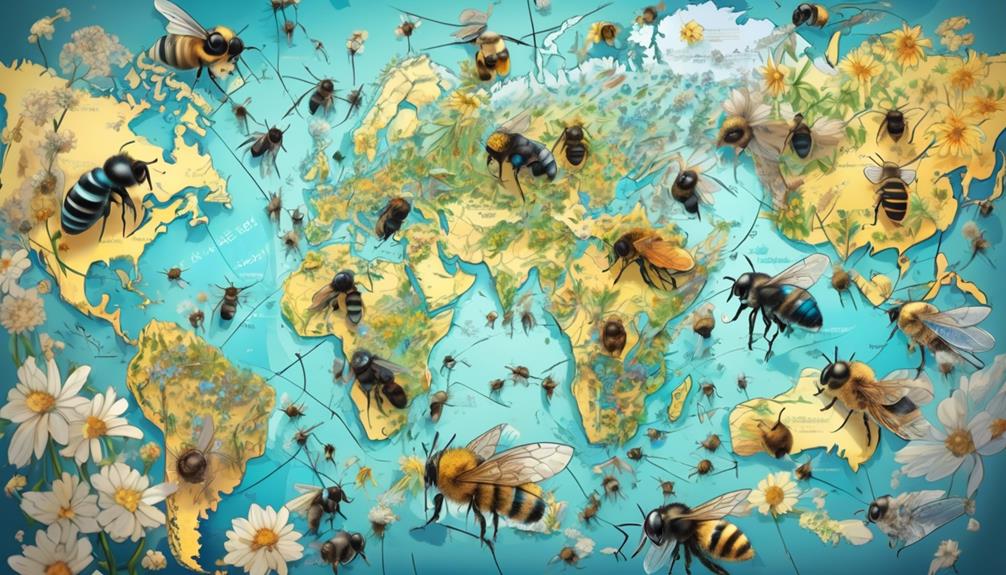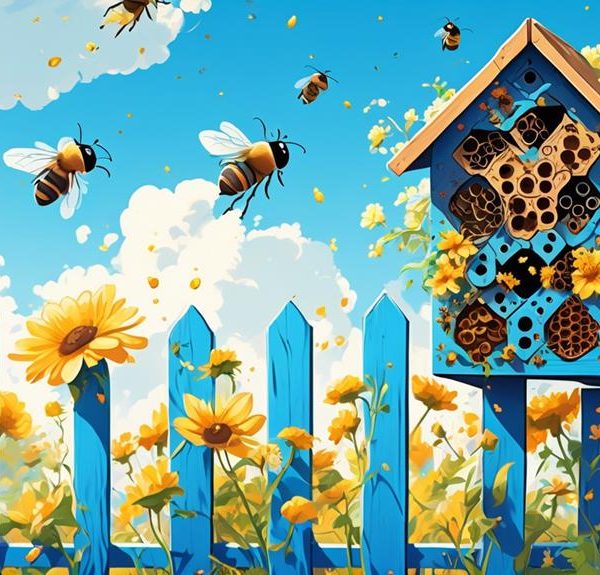Journey into the intriguing world of mason bees, as we explore their origins and role in our environment in 'Is Mason Bee Indigenous?

Is Mason Bee Indigenous?
In the buzzing world of bees, the humble honeybee often steals the spotlight, yet the lesser-known mason bee is equally intriguing. You've likely seen these industrious creatures in your garden, diligently collecting pollen, but have you ever stopped to question their origin? Are they indigenous to your region, or are they foreign invaders, venturing far from their natural habitats?
The answer might be more complex than you'd initially think. As we take this journey together, you'll discover the fascinating story of the mason bee, a tale that intertwines nature, science, and the subtle shifts in our environment.
Key Takeaways
- Mason Bees are native to North America, Europe, and Asia.
- They adapt to various habitats such as forests, meadows, and urban gardens.
- Mason Bees do not migrate long distances and instead adapt to seasonal changes.
- Their presence is crucial for maintaining biodiversity and ecosystem health.
Understanding the Mason Bee Species

To fully comprehend the Mason Bee species, it's crucial to delve into their unique biological characteristics, behavior, and ecological significance. You might be surprised to learn that they're not your typical honeybee. In fact, Mason Bees are solitary creatures, meaning they don't live in colonies like their more famous counterparts.
You'll find them in small holes in wood or in the ground, where they lay their eggs and care for their offspring independently. Despite their solitary nature, they're remarkably productive pollinators. You might even say they're more efficient than honeybees, as a single Mason Bee can do the work of up to 100 honeybees.
Biologically, they're fascinating creatures. Mason Bees are known for their metallic blue or green hue, a unique characteristic not common in other bee species. They don't produce honey, but they're equipped with a special organ called the pollen brush, which they use to collect pollen and nectar.
Their ecological significance is profound. As prolific pollinators, they play a pivotal role in maintaining biodiversity and ecosystem health. Without them, many plant species would struggle to reproduce, highlighting the importance of understanding and protecting Mason Bees.
Native Habitats of Mason Bees

Diving into the native habitats of Mason Bees, you'll discover these industrious pollinators thrive in various environments across the globe, from forests and meadows to urban gardens and orchards. They've adapted to diverse climatic conditions, proving their resilience and versatility.
Mason Bees are native to North America, Europe, and Asia. In these regions, they've established themselves in various ecosystems, each with its unique flora and fauna. They prefer temperate climates and are usually found in regions with a mix of deciduous trees and flowering plants. The bees' activity cycle aligns with the flowering periods of these plants, ensuring a constant food supply.
In urban environments, Mason Bees have shown remarkable adaptability. They're known to find refuge in tiny crevices in buildings, displaying a preference for man-made structures for nesting.
The choice of habitat significantly impacts their behavior, life cycle, and reproduction. For instance, in colder climates, they hibernate during winter and emerge in spring. In contrast, in warmer regions, they're active year-round.
Understanding these habitats is crucial for Mason Bee conservation efforts. By creating conditions that mimic their natural habitats, you can help sustain their populations, contributing to biodiversity and enhancing pollination.
Migration Patterns of Mason Bees

If you've ever wondered about the migration patterns of Mason Bees, you'll find it fascinating to know that unlike many other bee species, they don't typically migrate but rather adapt to their local environment's seasonal changes. This adaptation is primarily facilitated by their physiological response to temperature changes.
During the colder months, Mason Bees enter a state of diapause, a form of hibernation, which allows them to survive harsh conditions. They're ready to emerge when the temperatures rise and flowers start to bloom, ensuring a food source is available. This process eliminates the need for long distance migration, unlike their honeybee counterparts.
The males typically emerge first, followed shortly by the females. Mating occurs promptly, and the cycle continues. It's also vital to note that Mason Bees are solitary creatures. They don't form colonies like some other bee species. Instead, each female bee independently seeks out a suitable nesting location, often in pre-existing holes in wood or hollow stems, where she lays her eggs and provisions for her offspring.
Mason Bees Impact on Ecosystems

Understanding the impact of Mason Bees on ecosystems, you'll find they play a critical role in pollination, helping to maintain biodiversity and the health of plants in their local environment. These solitary bees are effective pollinators, often more so than their honeybee counterparts, as they carry pollen on their abdomen which easily brushes off on flowers.
Here's a snapshot of their ecological impact:
Mason Bee Impact | Explanation | Effect on Ecosystem |
|---|---|---|
Pollination | Mason Bees carry pollen on their abdomen, facilitating efficient pollination. | Increased plant diversity and health. |
Predator | They serve as prey for various birds and insects, promoting balance in the food chain. | Helps control their population, indirectly affecting plant health. |
Nesting | They build nests in small crevices, encouraging plant growth and soil health. | Improves soil structure and fertility. |
Biodiversity Booster | Their existence promotes a rich and diverse ecosystem. | Supports numerous other species both directly and indirectly. |
Mason Bees' contribution to ecosystems is invaluable. They not only boost plant health and diversity but also foster a balanced and thriving ecosystem. Understanding this, you'll appreciate the necessity of conservation efforts to protect these indigenous powerhouses.
Biodiversity and the Mason Bee

While you mightn't notice them at first glance, Mason Bees play an integral role in fostering biodiversity within their local environments. They're vital pollinators, often more efficient than honeybees. Their solitary lifestyle allows for a wider distribution of pollen, thereby promoting plant diversity and strengthening the ecosystem.
You might wonder how exactly they contribute to biodiversity. It's primarily through their pollination activities. Mason Bees visit a variety of plants within their range, transferring pollen as they go. This cross-pollination boosts genetic diversity among plant species, which in turn supports a broader range of insects and animals that depend on those plants for survival.
Furthermore, Mason Bees' nesting habits often result in the recycling of natural materials, which can benefit the soil quality and plant growth. This also contributes to biodiversity by promoting a healthy habitat for other organisms.
Conclusion
You've journeyed through the fascinating world of Mason bees, understanding their unique traits, native habitats, and migration patterns. They're indeed indigenous to certain regions, playing a vital role in their ecosystems.
Their existence enhances biodiversity, contributing significantly to pollination. Thus, the Mason bee isn't just a humble insect, but a critical component of our world's ecological balance.
Let's continue exploring and protecting these indigenous wonders for the health of our planet.


